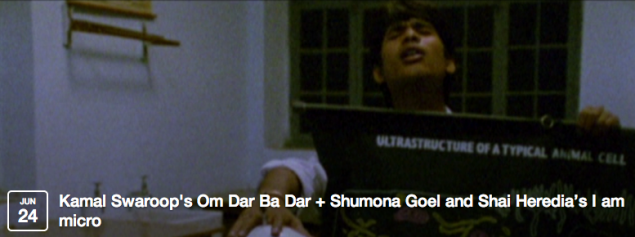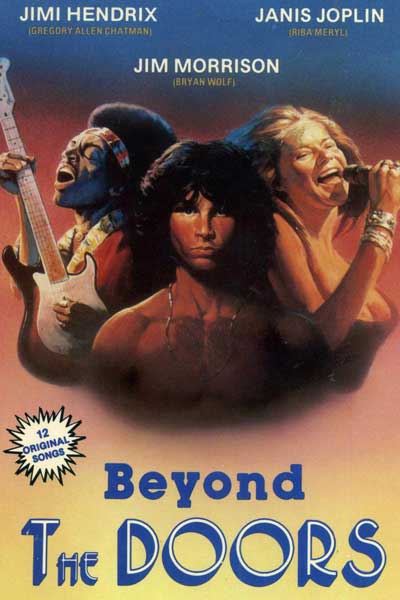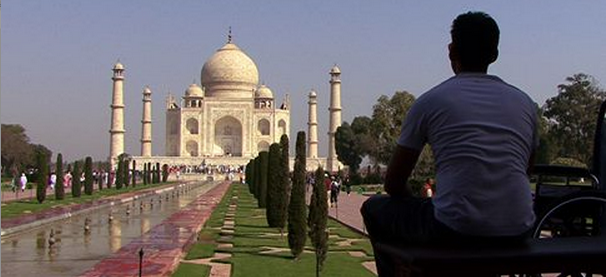 Even considering the long history of alternative Indian cinemas that have emerged under the shadow of Bollywood—the insistent auteurism of Guru Dutt, the humanist realism of Satyajit Ray, the Marxist interventions of Mrinal Sen—the subcontinent has produced nothing else like Kamal Swaroop’s utterly sui generis feature debut, Om Dar Ba Dar.
Even considering the long history of alternative Indian cinemas that have emerged under the shadow of Bollywood—the insistent auteurism of Guru Dutt, the humanist realism of Satyajit Ray, the Marxist interventions of Mrinal Sen—the subcontinent has produced nothing else like Kamal Swaroop’s utterly sui generis feature debut, Om Dar Ba Dar.
Upon its completion in 1988, Swaroop’s periphrastic coming-of-age tale baffled national film censors, who damned it to obscurity with an “adults only” rating. Nevertheless, it garnered critical acclaim and almost mythic notoriety through decades of festival screenings, eventually achieving an unparalleled cult status among Indian cinephiles, largely on the basis of murky file-shared video dubs. Now newly-restored, it was released to theaters in India for the first time only this year.
Swaroop’s film begins in a fictional village in Rajasthan, where Om, the son of an eccentric astrologer, grows from boyhood to adolescence alongside his sister Gayatri, a small-town feminist who insists on sitting in the men’s section at the local movie house. The fever dream plot that spins around these two characters defies easy recounting: a mysterious woman arrives as if from the pages of a pulp Hindi novel; festive Diwali firecrackers transform into actual bombs; frogs steal a black-market stash of diamonds; a local businessman attempts to avert the next World War; Om discovers how to breathe underwater and becomes a tourist attraction. Unlike the often strident rejections of popular film form espoused by parallel cinema, Om Dar Ba Dar embraces the Bollywood conventions of romance and musical numbers, but delivers these pleasures through dialog peppered with arch non-sequiturs, sly references to mythology and politics, psychedelic sequences that may be fantasies or dreams, and off-kilter filmi songs larded with weird synths and vocoder. As one New Delhi-based critic put it: “Welcome to the trippiest film made in Indian cinema.”
 The story of Jimi Hendrix, Jim Morrison, and Janis Joplin and how their message for their generation made them targets of a US government plot.
The story of Jimi Hendrix, Jim Morrison, and Janis Joplin and how their message for their generation made them targets of a US government plot.  This is the 2nd show of the Northside Film Festival at Union Docs: WHEN I WALK with POV (PBS) Aubrey Gallegos with feat filmmaker Jason DaSilva + EP Yael Melamede. Reception following!
This is the 2nd show of the Northside Film Festival at Union Docs: WHEN I WALK with POV (PBS) Aubrey Gallegos with feat filmmaker Jason DaSilva + EP Yael Melamede. Reception following! Tonight is the night of the 1st Annual Taste of Bushwick, a food party celebrating the eats, drinks, and merriments of Bushwick to benefit The Bushwick Starr.
Tonight is the night of the 1st Annual Taste of Bushwick, a food party celebrating the eats, drinks, and merriments of Bushwick to benefit The Bushwick Starr. Tonight at 6, catch “To Leo, a Tribute from American Abstract Artists”, presented by American Abstract Artists and Sideshow Gallery.
Tonight at 6, catch “To Leo, a Tribute from American Abstract Artists”, presented by American Abstract Artists and Sideshow Gallery.